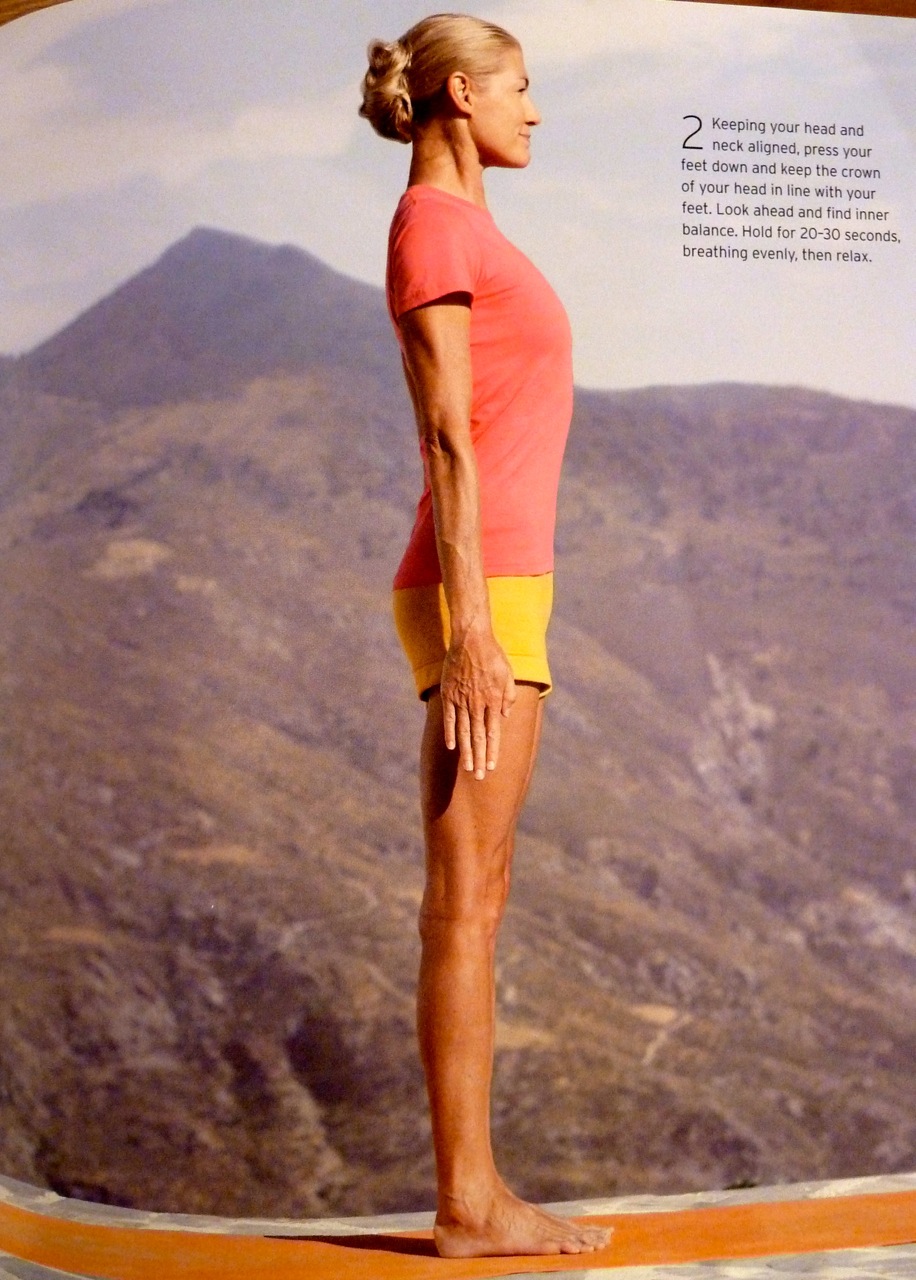Chapter 2: Stability – The Physical Body (Asana) – Part 2:
Here are some more extracts and quotes I found valuable in the second part of this chapter:
The mind does not balance when you force.
…
After reaching the final pose, one has to learn to let go of the effort and tautness of the muscles and shift the load onto the ligaments and joints so that they hold the asana steadily without even the breath causing the body to waver.
…
Focus on relaxing as you hold the stretch, not clenching, but relaxing and opening. This relaxes the brain as well as the body.
…
Notice your eyes as well, as you hold the stretch. Tenseness of the eyes also affects the brain. If the eyes are still and silent, the brain is still and passive. The brain can learn only when it begins to relax.
…
If the asana is done with continual reference to the back of the brain there is a reaction to each action and there is sensitivity. Then life is not only dynamic but is also electrified with life force.
…
One who knows the art of relaxation also knows also knows the art of meditation.
…
When an asana is done correctly the body movements are smooth and there is lightness in the body and freedom in the mind. When an asana is felt as heavy it is wrong.
…
Think of yourself as graceful and expanding however unlikely it may seem at the time.
…
When we lose this lightness our bodies shrink. The moment the body shrinks the brain becomes heavy and dull, and you see nothing. The doors of perception are closed.
…
We are seeking the balance of polarity not the antagonism of duality.
…
When performing asanas no part of the body should be idle, no part should be neglected.
Illustration: Tadasana (Mountain Pose) from Yoga Wisdom and Practice by BKS Iyengar
…
When the intellect is stable, there is no past, no future, only present. Do not live in the future; only the present is real.
…
In asana, we find balance and integration in the three dimensions of space, but we also find balance and integration in the fourth dimension of time.
…
Many people focus on the past or the future to avoid experiencing the present, often because the present is painful or difficult to endure. In a yoga class, many students think they must simply grit their teeth and bear it until the teacher tells them they can come out of the asana. This is seeing yoga as calisthenics and is the wrong attitude.
…
It is not that yoga is causing all of this pain; the pain is already there. It is hidden. We just live with it or have learned not to be aware of it.
…
The goal is to do the asana with as much possible intensity of intelligence and love. To do this, one must learn the difference between “right” pain and “wrong” pain. Right pain is not only constructive but also exhilarating and involves challenge, while wrong pain is destructive and causes excruciating suffering.
…
If the practice of today damages the practice of tomorrow it is not correct practice.
…
When we extend and expand our body consciousness beyond its present limitations we are working on the frontier of the known toward the unknown by an intelligent expansion of our awareness.
…
When everything else is stripped away the essential is revealed.
…
The test of a philosophy is whether it is applicable now in how you live your life.
…
An asana is not a posture that can ever be assumed mechanically.
…
Practitioners of the asanas alone often forget that yoga is for cultivating the head and the heart.
…
You must purge yourself before finding faults in others. When you see a mistake in someone else try to find if you are making the same mistake.
…
In asana and pranayama practice we should have the impression we are working on the outer to get closer to the inner reality of our existence.
…
There is no such thing as a doorway that you can only go through one way. Yes, we are trying to penetrate in, but what is trying to come out to meet us?
…
The body is the bow, asana the arrow, and soul is the target.
…
How can you do asana with your soul? We can only do it with the organ of the body that is closest to the soul – the heart.
